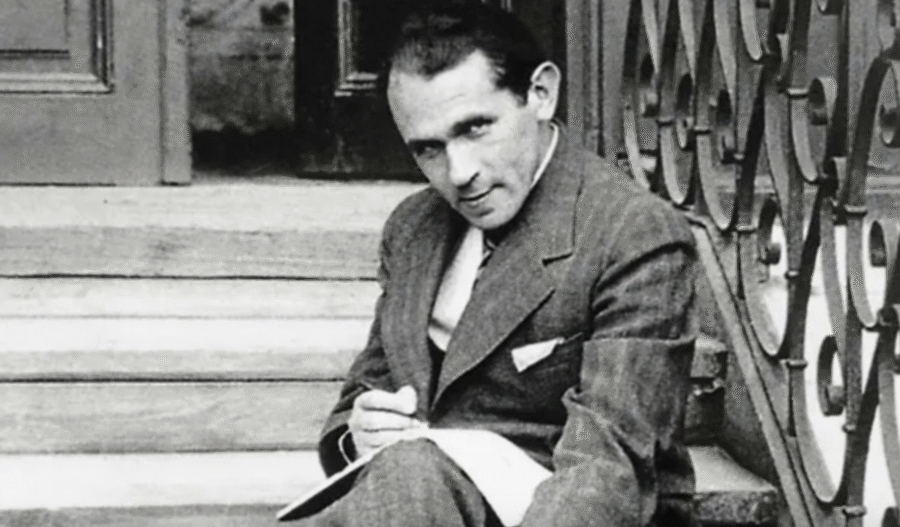As war broke out in September 1939, the Polish government decided to relocate the national gold reserves to prevent their capture by invading powers. Under the direction of Colonel Adam Koc, recently appointed Deputy Minister of the Treasury the mission commenced from Warsaw and Lublin. An urgent convoy was organised to load nearly 80 tonnes of gold onto whatever vehicles were available, including ageing buses, amidst relentless air raids. By 8 September, the dispersed assets from Warsaw and Lublin had been consolidated in Łuck, marking the beginning of the overland odyssey.
Once the gold was assembled, command of the evacuation process was assumed by Major Henryk Floyar-Rajchman for the stretch from Łuck to Śniatyn until reaching the Romanian border, with Colonel Ignacy Matuszewski taking charge beyond that point. Evading Luftwaffe strikes, the convoy reached Śniatyn on 12 September, where it merged with other regional reserves. The following evening, the gold was transferred into freight trains bound for Constanța, Romania, arriving there on 15 September.
The convoy crew included one of Poland’s top female athletes Halina Konopacka, as a wife of col. Ignacy Matuszewski.
At Constanța, the gold awaited the arrival of the British vessel Eocene, in accordance with an evacuation agreement negotiated by Poland’s Deputy Foreign Minister Jan Szembek and Colonel Koc. The agreement facilitated maritime transfer to France, and by 5 October 1939, the treasure had safely reached the Bank of France’s vaults in Nevers, remaining under the authority of the Polish government-in-exile
A separate and equally dramatic rescue action took place in Vilnius, where nearly one tonne of gold and 50 kg of valuables from the Belvedere Museum were stored. When ordered by the Soviets to surrender these assets, the branch manager, Jan Oskwarek-Sierosławski, refused and in result was arrested and died in suspicious circumstances. The treasures were secretly evacuated, aided by Japanese Vice-Consul Chiune Sugihara, who orchestrated their passage via Sweden and ultimately to South America.
In May 1940, with the fall of France looming, the Polish government asked Britain to transport the Nevers gold overseas. The reserves were moved to the port of Lorient, then loaded onto the cruiser Victor Schœlcher on 16 June. Initially destined for the United States, the vessel stopped at Casablanca before reaching Dakar. From there, the gold was transported some 800 km inland to Fort Kayes, into the custody of the Vichy regime, placing Poland’s control over the reserves in grave danger.
In October 1941, General de Gaulle’s Free French government assured a return of the gold to the Polish authorities. By January 1944, Polish officials reached Fort Kayes and reclaimed the treasure, relocating it back to Dakar. However, a post-inventory revealed a shortfall exceeding 10%, and the matter was never resolved. The gold was then divided, with portions sent to New York, Ottawa, and London for safekeeping.
Ignacy Matuszewski, a key organiser of the gold evacuation, later settled in the United States, where he became a vocal critic of both Nazi Germany and Soviet communism, as well as the post-war Communist regime in Poland.
His outspoken stance and uncompromising journalism drew the attention of FBI Director J. Edgar Hoover, who regarded him with suspicion during the Second World War. In the climate of wartime intelligence rivalry, Matuszewski’s independent anti-Soviet activities clashed with Washington’s temporary alliance with Moscow, making him appear troublesome to American authorities.
Hoover’s surveillance and attempts to discredit Matuszewski were therefore driven less by any wrongdoing on Matuszewski’s part than by political expediency, silencing voices that challenged the fragile alliance with the USSR.
Ignacy Matuszewski never faced arrest or deportation in the United States, but Hoover’s hostility left him marginalised and under constant pressure. The FBI kept him under surveillance, curtailed his political influence, and reportedly made it harder for him to secure stable work or broader recognition for his efforts in the Polish émigré community.
Exhausted, frustrated, and without institutional support, Matuszewski died suddenly of a heart attack in New York in 1946, his final years marked by financial struggle and political ostracism rather than the honour one might expect for a man who had helped save Poland’s fortune.
After the war, Communist-controlled Poland raised claims to the reserves, which led to a complicated dispute over the Western-deposited gold. Agreements in June 1946 partially absolved pre-war debts to Britain, though £3 million worth of gold remained earmarked for funds to support Polish refugees. Meanwhile, Canada and the United States, following diplomatic recognition shifts, released Polish holdings to the new administration, which largely retained them in Western banks. Ultimately, approximately 30% of the pre-war gold was believed to have ended up in communist hands, though exact figures remain a secret until today.
By 1952, the historic Bank of Poland had been dissolved, replaced by the National Bank of Poland. The gold reserves were managed by Hilary Minc, the Minister of Industry and Trade (and later Deputy Prime Minister). The communist Poland’s purchases made abroad using those gold reserves were directed predominantly towards heavy industry and the military, in line with Stalinist economic directives, often at the expense of civilian needs.
Source: Pamięć.pl
Photo: @ipngovpl_eng
Tomasz Modrzejewski










